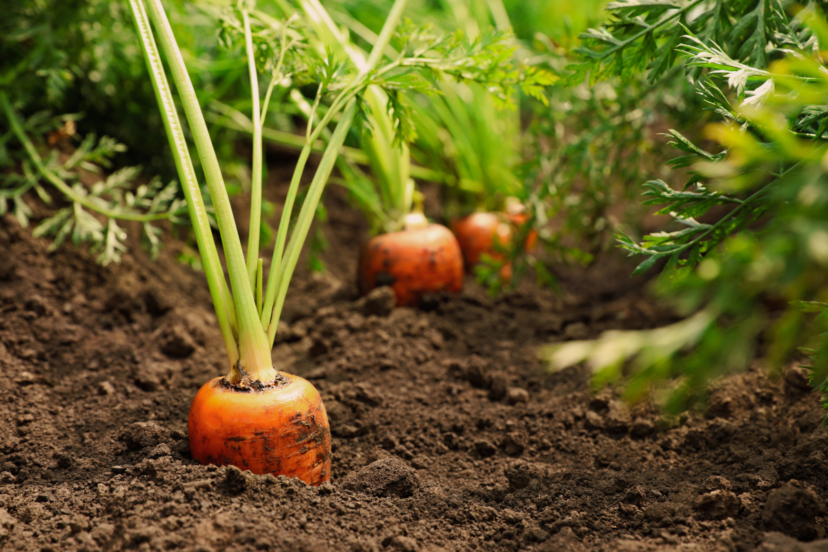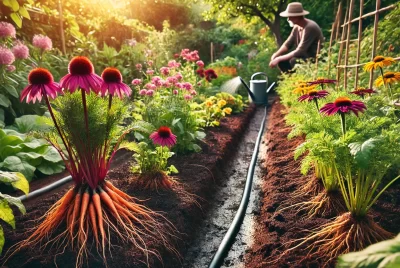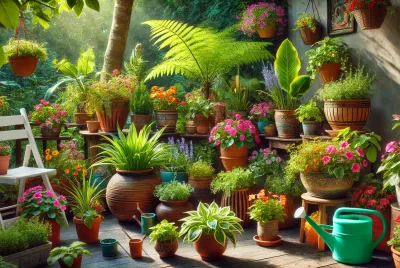Gardening in Sandy Soil
Introduction: Gardening in Sandy Soil
Gardening in sandy soil might sound like a tough job, but it can actually be quite rewarding! If you’ve got sandy soil in your garden, you know it feels gritty and loose. This type of soil is common in coastal areas and deserts, but no matter where you live, understanding how to work with sandy soil can make a big difference in your gardening success.
Overview of Sandy Soil Characteristics
Sandy soil is made up of large particles that are spaced apart, which means water can flow through it very easily. This is great for plants that don’t like wet feet, meaning they don’t like their roots too wet. However, because it drains so fast, it can also mean that water and nutrients wash away before plants can use them.
Importance of Understanding Soil Type in Gardening
Knowing what type of soil you have helps you figure out what plants will thrive and what adjustments you might need to make. Each soil type, whether it’s clay, loam, or sandy, has its own set of characteristics. For those of us dealing with sandy soil, it’s all about improving what we have to make our gardens bloom and grow better.
Benefits of Gardening in Sandy Soil
You might be wondering if there are any good points to having sandy soil. Absolutely! Here are a couple:
Quick Draining Features
The biggest advantage of sandy soil is its ability to drain water quickly. This is perfect for plants that hate having too much water around their roots. You won’t have to worry much about root rot, which can be a big problem in denser soils.
Easy to Work With During Planting
Sandy soil is also really easy to dig through. If you love gardening, you’ll appreciate not having to struggle with a spade. This makes planting new plants and digging up old ones much easier and less time-consuming.
Challenges of Gardening in Sandy Soil
Despite the benefits, there are some challenges that come with gardening in sandy soil:
Nutrient Retention Issues
The biggest issue with sandy soil is that it doesn’t hold on to nutrients very well. Nutrients wash out with the draining water, which means you have to fertilize more often to make sure your plants get all they need to grow strong and healthy.
Water Retention Challenges
Along with nutrients, water also drains away quickly. This can be tough on plants, especially during hot, dry weather. They might get thirsty much quicker than plants in other types of soil.
Comparing Water Retention in Sandy Soil vs. Clay Soil
While sandy soil lets water escape fast, clay soil does the opposite. It holds water tightly, which can be just as problematic if the water stays around too long. In sandy soil, the trick is to find a balance so that the water stays long enough to be useful.
Amending Sandy Soil
Improving sandy soil is key to successful gardening in it. Let’s explore how you can make your sandy soil better for gardening.
Introduction to Soil Amendments
Soil amendments are materials you add to your soil to improve its properties. For sandy soil, we aim to increase its ability to hold nutrients and water.
Organic Matter
Adding organic matter is one of the best ways to improve sandy soil.
Compost
Compost is wonderful for sandy soil because it helps hold moisture and nutrients that would otherwise wash away. Mix plenty of compost into your garden beds each planting season to keep your soil rich and healthy.
Well-Rotted Manure
Like compost, well-rotted manure improves moisture and nutrient retention. It also adds beneficial microorganisms that help break down organic matter, making more nutrients available to your plants.
Inorganic Amendments
Sometimes, you might need to add inorganic materials to help your sandy soil.
Perlite
Perlite can be mixed into sandy soil to help air and water move through it better. This is especially helpful for root growth and health.
Vermiculite
Vermiculite holds onto water and nutrients a bit longer than perlite, which can be very useful in sandy soil. It helps create a balance where water and nutrients are retained long enough for plant roots to absorb them.
Gardening in Sandy Soil: Choosing the Right Plants
Some plants thrive in sandy soil, making them perfect for your sandy-soil garden.
Best Plants for Sandy Soil
Here are some plants that naturally do well in sandy conditions:
Succulents and Cacti
These plants are champions at surviving in sandy soil because they store water in their leaves and need very little from the soil. Think of plants like aloe vera, agaves, and sedums.
Deep-Rooted Vegetables
Vegetables like carrots, radishes, and potatoes can do really well in sandy soil because the loose texture allows their roots to penetrate deeply without much resistance.
Plants to Avoid in Sandy Soil
It’s also good to know which plants might struggle in sandy soil due to its quick-draining nature:
- Most shallow-rooted plants that require more consistent moisture, like lettuce, might not do as well unless the soil is frequently watered and properly amended.
Gardening in Sandy Soil: Water Management Strategies
Proper water management is crucial in sandy soil to prevent both underwatering and overwatering.
Efficient Watering Techniques
Drip Irrigation
Installing a drip irrigation system can be a game changer in sandy soil. It delivers water directly to the plant roots, minimizing waste and ensuring that water gets where it’s needed most.
Deep Watering Method
Instead of frequent shallow watering, deep watering encourages plants to grow deeper roots, which helps them access water that sinks below the surface.
Mulching for Moisture Retention
Mulching is essential in sandy soil to help keep the moisture from evaporating too quickly.
Types of Mulch Suitable for Sandy Soil
Organic mulches like straw, bark, or leaf mold are great for sandy soil because they add organic matter as they decompose, besides helping to retain moisture.
How to Apply Mulch Properly
Apply a layer of mulch about 2-3 inches thick around your plants, making sure not to pile it up against the stems to prevent rot.
These sections aim to equip you with strategies and tips to manage the unique characteristics of sandy soil effectively. By understanding how to amend the soil, choosing the right plants, and managing water use wisely, you can turn a sandy garden into a thriving green space.
Gardening in Sandy Soil: Fertilization Techniques
Getting the right nutrients into your sandy soil is crucial for healthy plant growth.
Suitable Fertilizers for Sandy Soil
Slow-Release Fertilizers
These are ideal for sandy soil because they release nutrients gradually, giving plants a steady supply without the risk of nutrient washout after heavy rains.
Liquid Fertilizers
Liquid fertilizers are absorbed quickly, making them a good option for giving your plants a quick nutrient boost. However, you’ll need to apply them more frequently than in other soil types.
Timing and Application Methods
It’s best to fertilize early in the morning or late in the afternoon to avoid the hottest part of the day, which can stress the plants. Always water your soil well after applying granular fertilizers to help them dissolve and reach the plant roots.
Seasonal Care for Gardening in Sandy Soil
Adjusting your gardening practices with the changing seasons will help you maintain a vibrant garden all year round.
Spring and Summer Care
Preparing Soil in Spring
Incorporate fresh compost or manure to replenish nutrients washed away during winter rains.
Managing Soil during Hot Summers
Regular mulching and deep watering will help your garden survive and thrive during hot summers, keeping your soil moist and cool.
Fall and Winter Care
Preparing for Dormancy
Reduce watering as plants go dormant. Apply a thicker layer of mulch to protect against frost and retain any winter moisture.
Winter Soil Protection
Cover your soil with organic material or a cover crop to protect it from erosion and nutrient loss during rainy winter months.
Gardening in Sandy Soil Conclusion
Gardening in sandy soil presents unique challenges but also offers significant advantages if managed correctly. By amending your soil with organic and inorganic materials, choosing the right plants that thrive in sandy conditions, and employing efficient watering and fertilization strategies, you can turn your sandy garden into a flourishing oasis. Remember, every soil type has its own personality; it’s all about working with what you have and making small adjustments to ensure your plants can thrive. So, grab your gardening tools and get ready to transform your sandy soil into a garden you’re proud of!
Additional Resources
To further enhance your knowledge and skills in gardening in sandy soil, consider checking out gardening books, local workshops, and online forums where you can connect with other gardeners who have the same soil challenges. Happy gardening!
FAQs on Gardening in Sandy Soil
1. What is the best way to improve water retention in sandy soil?
Answer: To improve water retention in sandy soil, add organic materials like compost or well-rotted manure. These amendments help to retain water and nutrients that sandy soil typically loses quickly. Additionally, using mulch can prevent moisture from evaporating too fast.
2. Which plants are best suited for gardening in sandy soil?
Answer: Plants that thrive in sandy soil often have deep root systems or are drought-tolerant. Succulents, cacti, and deep-rooted vegetables like carrots and potatoes are excellent choices. These plants are well-adapted to the quick drainage characteristics of sandy soil.
3. How often should I water plants in sandy soil?
Answer: Watering frequency in sandy soil should be more often than in clay soils due to its high drainage rate. However, instead of shallow, frequent watering, opt for deep watering methods that encourage roots to grow deeper into the soil, which helps them access moisture that has drained below the surface.
4. What type of fertilizer is best for sandy soil and how often should it be applied?
Answer: Slow-release fertilizers are ideal for sandy soil as they provide a steady supply of nutrients over time, reducing the risk of leaching away with quick-draining water. Liquid fertilizers can also be used but may require more frequent applications. It’s best to follow the specific product instructions and consider the nutrient needs of your plants.
5. How can I protect my sandy soil garden during the winter?
Answer: To protect your sandy soil in winter, reduce watering as plants enter dormancy, and apply a thick layer of organic mulch to insulate the soil and minimize nutrient runoff during rain. Consider planting a cover crop to further protect and enrich the soil during the off-season.




